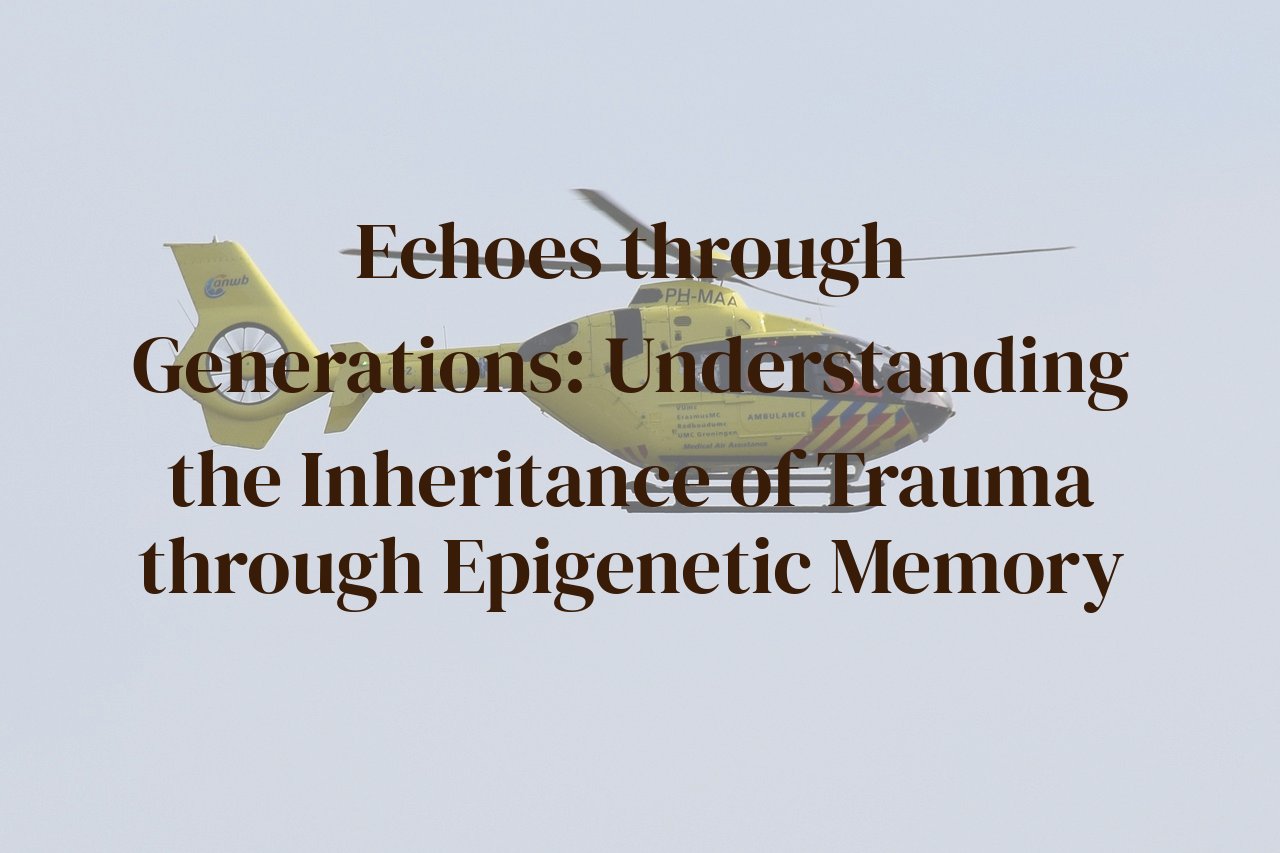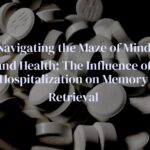
Imagine that the traumas experienced by your ancestors could affect not just your genes, but your health and well-being as well. This blog post dives deep into the concept of ‘Epigenetic Memory: How Trauma Can Be Inherited.’ Here, we explore the complex mechanisms through which traumatic experiences can leave a lasting mark on the genes, often affecting subsequent generations.
By reading this post, you will gain insight into the fascinating world of epigenetic changes, how they occur, and how they may influence health outcomes. This knowledge can be particularly beneficial for those looking to understand their own familial health issues, seek preventative measures, or simply find solace in the science behind inherited trauma.
Table of Contents
1. The Science of Epigenetics: A Primer
The field of epigenetics has revolutionized our understanding of how traits and diseases can be inherited not just through the genetic code, but also through modifications that influence gene expression. In layman’s terms, while traditional genetics focuses on the sequence of DNA, epigenetics looks at how gene activity can be altered without changing the DNA sequence itself.
My personal fascination with epigenetics began during a late-night study session in my medical school days. I stumbled upon research examining how identical twins could end up with such different health outcomes despite having almost identical DNA. It turned out that their gene expression had been modified by various life experiences and environmental factors—a realization that left me in awe.
Epigenetic changes can be triggered by numerous factors including diet, stress, exposure to toxins, and even traumatic experiences. These changes can switch genes on or off and can potentially be passed down to future generations. This concept of ‘epigenetic memory’ essentially means that the life experiences of parents or even grandparents can impact the health and behavior of their descendants.
To grasp how this works, let us delve into some key mechanisms. One such mechanism is DNA methylation. This involves the addition of a methyl group to DNA, typically silencing the genes to which it is attached. In a sense, DNA methylation acts as a dimmer switch for genetic expression, reducing the activity of certain genes.
Another important mechanism is histone modification. Histones are proteins around which DNA wraps, and how tightly or loosely the DNA is wound can influence gene expression. Modifications to histones, such as the addition or removal of chemical groups, can either enhance or repress gene activity. Think of histone modification as a way to tweak the accessibility of your genetic information—either keeping it under lock and key or making it readily available.
Understanding these mechanisms allows us to appreciate how deeply interwoven our genetic code is with our life experiences. It’s akin to realizing that our lives are written in indelible ink on our genes, yet with the potential for pivotal edits based on how we live and what we endure.
The implications of this are profound. Recognizing the role of epigenetics in trauma inheritance might be the key to unravelling complex conditions like PTSD, addiction, and even certain cancers. It also makes me reflect on how holistic and integrated our approach to health and well-being should be.
In sum, epigenetics offers a compelling lens through which we can explore how trauma and other life events ripple through generations, shaping not just who we are but also who we may become. It draws a bridge between our ancestors’ stories and our own, connecting us in an intricate dance of biology and life experiences.
2. Traumatic Events: How They Impact Genetic Expression
Experiencing trauma is not just a psychological burden; it can also leave a lasting imprint on our genes. During traumatic events, our body responds by triggering a cascade of stress hormones such as cortisol and adrenaline. While these reactions are critical for immediate survival, they also have long-term consequences on our genetic expression.
One particular night, I vividly recall feeling the weight of generational trauma. As my grandfather told stories of war, it was as though his terror was etched into the fabric of my being. Scientists now know that when faced with trauma, certain genes that are responsible for regulating stress responses become hyperactive, altering the way they express themselves.
The stress hormones initiated by traumatic events activate specific molecular pathways that can modify the expression of genes without changing the DNA sequence itself. This phenomenon is part of a broader field of study called epigenetics. For instance, increased cortisol levels can lead to changes in gene expression patterns that influence how our bodies react to stress in the future.
One of the most impactful ways stress and trauma can influence genetic expression is through epigenetic marks, such as DNA methylation. These tiny chemical tags attach to our DNA and can ‘turn off’ genes related to stress resistance, making us more vulnerable to future stressors. This was something I personally grappled with and sought therapy for.
Trauma can also affect histones, the proteins around which DNA winds. Alterations in histone modification can impact how tightly or loosely DNA is wound, thereby controlling the accessibility of genes for transcription. It is these modifications that sometimes allow for the inheritance of trauma responses, essentially passing down stress-resilient or stress-prone phenotypes to subsequent generations.
Furthermore, epigenetic changes influenced by trauma are not static; they may evolve and manifest differently throughout an individual’s life. This is why traumatic experiences at different life stages can have varying impacts on our genetic expression. When I encountered severe stress during my formative years, I noticed shifts in how my body and mind responded over time, something that science now begins to understand better.
In essence, traumatic events do more than just scar our memories; they leave an indelible mark on our genetic makeup. This intersection of trauma and genetic expression underscores the complexity of human resilience and vulnerability, extending the conversation from mere survival to understanding how we carry the echoes of past traumas within our very DNA.
3. Mechanisms of Epigenetic Memory: DNA Methylation and Histone Modification
One of the most fascinating areas of epigenetics involves understanding the mechanisms behind epigenetic memory, particularly how DNA methylation and histone modification work. Both processes serve as critical conduits through which trauma can imprint itself on our DNA, making these mechanisms central to the inheritance of trauma.
DNA methylation involves the addition of a methyl group to the DNA molecule, specifically at cytosine bases that are followed by guanine bases (CpG sites). This seemingly small chemical change can significantly alter how genes are expressed, effectively turning genes on or off without changing the underlying genetic code. I often find myself in awe of how such a tiny molecular change can have profound implications. For instance, individuals exposed to significant stress or trauma may experience increased levels of DNA methylation in specific gene regions, leading to altered stress responses that can be passed down to future generations.
Histone modification, on the other hand, involves changes to the proteins that DNA wraps around. Histones act like spools holding the thread of DNA, and modifications to these proteins can either enhance or inhibit gene expression. The most common modifications include acetylation, methylation, and phosphorylation, each altering the histone’s interaction with DNA and thereby influencing the accessibility of certain genes. Imagine histones as gatekeepers; if they decide to ‘close the gate’ through modification, the gene becomes less accessible for transcription.
It’s fascinating to see how these two mechanisms work in tandem. DNA methylation is like setting a lock, while histone modification is akin to controlling the key’s accessibility. When trauma occurs, these mechanisms can react in real-time, altering gene expression patterns. Research has shown that these modifications can be preserved through cellular division, essentially encoding a ‘memory’ of the trauma that can be inherited by subsequent generations.
My interest in this field piqued after reading about the various studies exploring Holocaust survivors and their descendants. The evidence of epigenetic changes linked to trauma provided a tangible connection between the experiences of one generation and the physiological realities of the next. It’s as if the echoes of trauma vibrate through our very DNA, a haunting yet enlightening aspect of human biology.
Understanding these mechanisms helps demystify the complex ways trauma can be passed down intergenerationally. Whether we look at DNA methylation or histone modification, we see how trauma can leave lasting marks—literal and figurative—on our genetic makeup.
4. Studies Show: Evidence of Trauma Inheritance in Humans
One of the most compelling pieces of evidence for the inheritance of trauma through epigenetic memory comes from studies conducted on Holocaust survivors and their descendants. Researchers have identified that children and even grandchildren of Holocaust survivors exhibit elevated levels of cortisol, a hormone associated with stress. Despite not experiencing the traumatic events themselves, these descendants show similar physiological responses, which suggests that trauma has left a genetic imprint that persists across generations.
The Dutch Famine Study provides another insightful look into the inheritance of trauma. Pregnant women who suffered from starvation during the Dutch Hunger Winter of 1944-1945 passed on more than just memories to their offspring. The children born during or shortly after the famine displayed significantly higher risks of developing metabolic disorders, such as obesity and diabetes, later in life. These findings point to changes in gene expression as a result of their mothers’ traumatic experiences.
In a study involving survivors of the September 11 attacks, researchers found evidence of trauma being transmitted to the next generation. Pregnant women who were directly exposed to the attacks showed altered cortisol levels not just in themselves but also in their babies. These changes in hormonal levels and stress responses indicate that trauma can indeed be handed down through epigenetic mechanisms, even if the offspring never directly experienced the initial event.
Animal studies also offer profound insights into this phenomenon. Research on mice exposed to traumatic stress suggests that the effects of trauma can persist across multiple generations. Male mice subjected to high-stress environments showed altered behaviors and hormonal responses. Intriguingly, their offspring, even those not directly exposed to stress, exhibited similar changes. The transgenerational transmission of these traits underscores the role of epigenetic mechanisms in propagating the effects of trauma.
As a healthcare expert, I have seen firsthand the profound impact of inherited trauma on mental and physical health. Patients who cannot understand their heightened stress levels or vulnerability to certain conditions often have family histories steeped in traumatic experiences. While genetic predispositions certainly play a role, the emerging field of epigenetics offers a powerful explanatory framework for understanding these complex intergenerational effects. It is both humbling and enlightening to witness how our ancestors’ experiences can shape our current lives, and it emphasizes the importance of addressing both past and present traumas in therapeutic settings.
5. Healing the Past: Can We Reverse Epigenetic Changes?
As we delve deeper into the mesmerizing world of epigenetics, one question continually emerges: can we reverse the epigenetic imprints left by trauma? This thought beckons both scientists and those of us affected by ancestral trauma, offering a glimmer of hope in understanding how healing might transpire across generations.
My personal journey through this labyrinth began when I stumbled upon the concept of ‘epigenetic memory’ during a challenging period in my life. It felt as if the shadows of unspoken family histories were whispering through the corridors of my DNA. This profound realization led me to explore the theories and findings that suggest we can indeed heal these invisible wounds.
The cornerstone of reversing epigenetic changes lies in the dynamic nature of the human genome. Epigenetic marks such as DNA methylation and histone modification are not permanent fixtures; they can be altered by our environment, lifestyle, and even therapeutic interventions.
1. Lifestyle Modifications: Nutrition and Physical Activity
Emerging research emphasizes the impact of diet and exercise on epigenetic markers. Nutrients like folate, vitamin B12, and choline are crucial for DNA methylation processes. Regular physical activity has been shown to positively influence gene expression related to stress responses and inflammation. By prioritizing a balanced diet and incorporating exercise, we may gradually reshape these inherited epigenetic patterns.
2. Psychological Interventions: Therapy and Mindfulness
Psychological therapies such as cognitive-behavioral therapy (CBT) and trauma-focused therapy can pave the way for healing. Mindfulness practices, including meditation and yoga, have also been linked to favorable epigenetic modifications. By addressing trauma at an emotional and psychological level, these interventions might help shift harmful epigenetic marks left by previous generations.
3. Pharmacological Approaches: Epigenetic Drugs
Scientists are exploring a new frontier in medicine with epigenetic drugs—compounds designed to specifically target and modify epigenetic markers. Although still in its nascent stages, this field holds the promise of revolutionary treatments for hereditary trauma, offering personalized interventions based on an individual’s unique epigenetic landscape.
4. Social Support Networks: The Power of Community
The influence of social environments on gene expression cannot be overstated. Communities and support networks play a significant role in providing emotional stability and mitigating stress—both of which can potentially reverse detrimental epigenetic changes. Sharing experiences and forming supportive bonds can create a nurturing atmosphere conducive to healing.
The quest to reverse epigenetic changes is not just a scientific endeavor but a deeply personal journey, often intertwined with our own narratives and those of our ancestors. While the path might seem daunting, the convergence of research and personal resilience offers a beacon of hope. With each step towards understanding, we edge closer to healing the echoes of trauma that resonate through generations.
Conclusion
The world of epigenetic memory provides a compelling glimpse into how our ancestry can shape our present health. By understanding the mechanisms and effects of trauma inheritance, we are better equipped to break cycles of suffering and promote well-being for future generations.
From exploring the role of DNA methylation to examining groundbreaking studies, this post has taken you through a journey of knowledge that could change how we perceive the impact of trauma. Navigating the science of epigenetic memory empowers us to make informed choices for our own health and that of our descendants.



